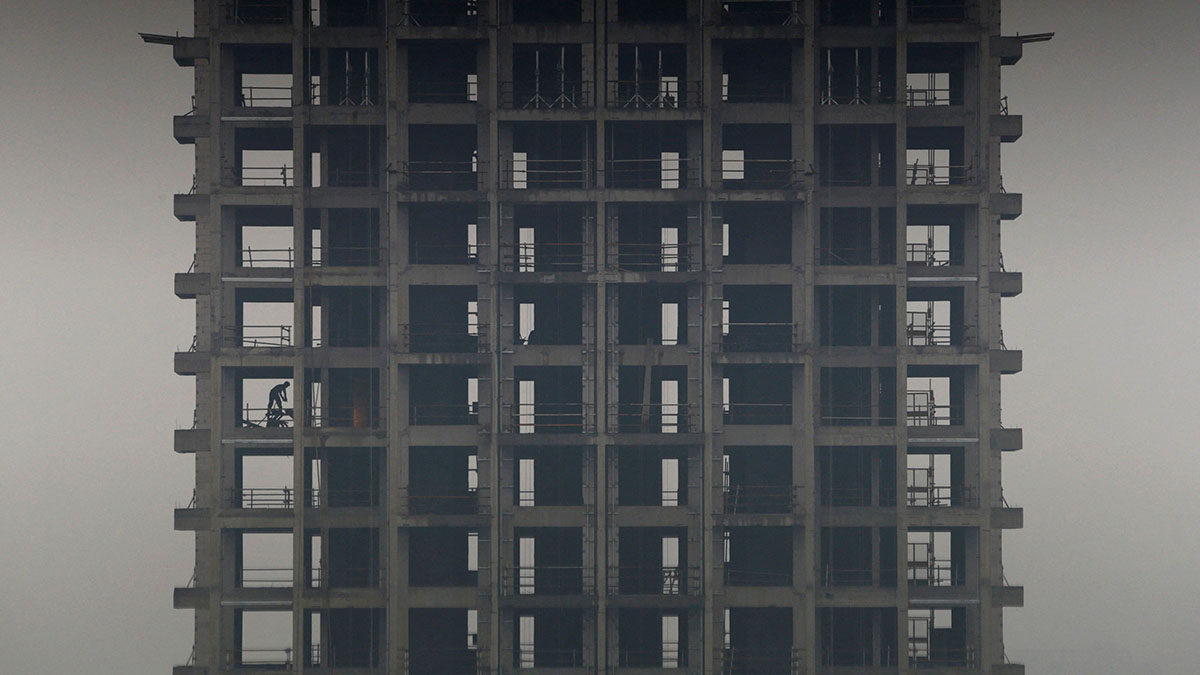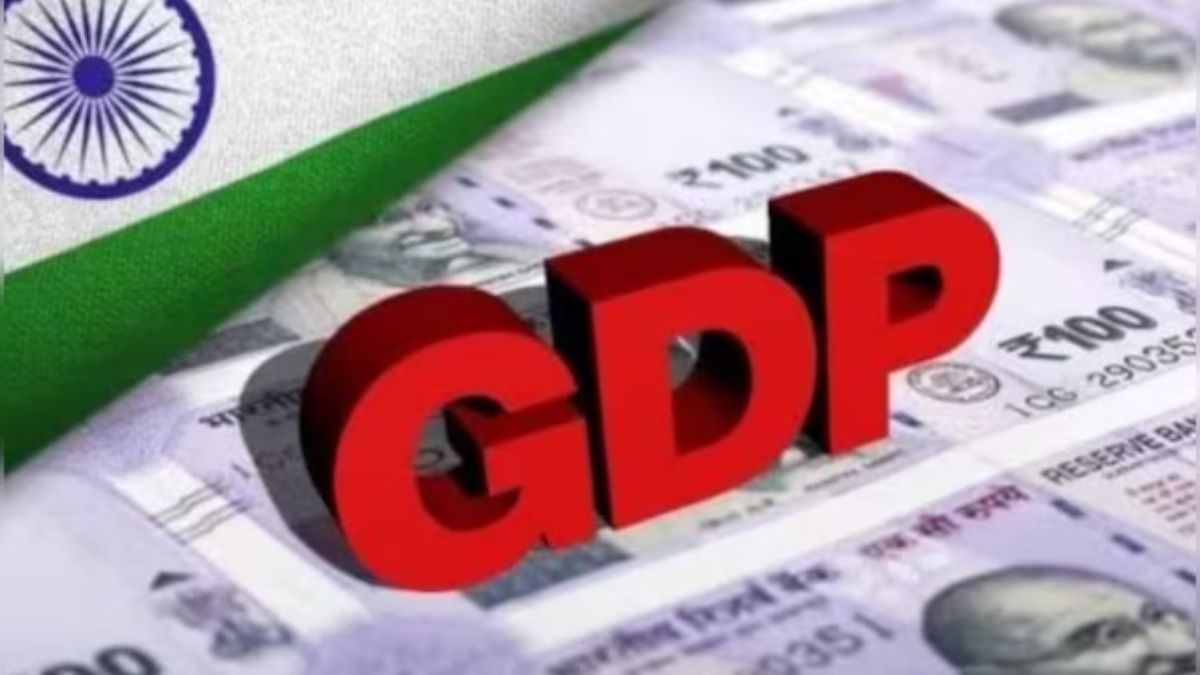The surge in home sales after Beijing’s stimulus measures has reignited optimism, but the future of China’s housing market still hinges on deeper structural reforms read more
)
(File) A labourer works on a construction site of a residential building during a hazy day in Hangzhou in China. Reuters
China’s housing market, which used to be a key driver of its economic growth, has struggled since the introduction of the “three red lines” policy in 2021. This policy was aimed at limiting excessive borrowing by property developers, but it led to record levels of debt defaults and widespread delays in housing projects. As a result, many homebuyers lost confidence in the market, causing a significant downturn.
To address this crisis, Beijing changed its approach in late 2023 by launching several measures to boost the struggling real estate market. These included lowering mortgage rates, reducing down-payment requirements, and easing residency restrictions in major cities to encourage demand and stop the sector’s decline.
According to the South China Morning Post, the government has also introduced a massive 4 trillion yuan (around US$561.7 billion) credit line for approved residential projects, with plans to renovate 1 million older homes in big cities. These efforts are part of a broader attempt to restore confidence in the housing market, which has been a major contributor to China’s economy, making up about a quarter of its GDP.
Short-term gains: Immediate impact of stimulus measures
Beijing’s recent measures to boost the housing market have had a quick impact. According to data from the Lingping Real Estate Data Research Institute, new home sales in 15 Chinese cities surged by 24 per cent last week, reaching 24,287 units. Sales of existing homes also went up by 20 per cent, with 20,724 units sold across 10 major cities, as reported by the South China Morning Post. This is a big improvement compared to the weekly average of 15,497 units before the new policies were introduced.
Cities like Shanghai and Shenzhen have seen particularly strong results. In Shanghai, more than 1,000 homes were sold daily in the secondary market for two days straight, and monthly sales could hit 25,000 units. In Shenzhen, all 192 apartments in the Guangming district sold out in just 90 minutes, bringing in around 600 million yuan. Earlier, 332 units from another developer were also sold out quickly.
The “golden week” holiday in early October also helped boost sales. New home sales in 50 major cities jumped by 65 per cent compared to the previous year, according to Beike Research Institute, showing a renewed interest from buyers.
Reshaping buyer confidence: From decline to optimism
The problem of unfinished housing projects and developers defaulting on their loans since 2021 had caused a major loss of confidence among homebuyers. However, Beijing’s recent efforts, like speeding up loans for certain approved projects and focusing on completing delayed developments, are starting to make a difference.
In January 2024, China introduced a “whitelist” system that lets city governments choose residential projects that can get faster bank loans. This initiative is meant to rebuild trust by ensuring that unfinished homes get completed. By October, 2.23 trillion yuan in loans had been approved for these projects, with plans to raise that to 4 trillion yuan by the end of the year.
According to CNBC, the government has also taken other steps, like lowering the reserve requirement ratio for banks and reducing the minimum down payment for second homes. These moves have injected more money into the housing market, showing that Beijing is serious about stabilising the sector and preventing further damage to consumer confidence.
Differentiating city tiers: Winners and losers
While the overall housing market in China is showing signs of recovery, the situation varies greatly between different types of cities. Major Tier-1 cities like Beijing, Shanghai and Shenzhen are leading the rebound. These cities have stronger local economies, steady demand, and specific policies that have boosted home sales. For example, South China Morning Post reported that Shanghai’s secondary market is on track for one of its best months in recent history.
However, smaller, lower-tier cities are still facing difficulties, especially in areas with too many unsold homes. These cities have slower economic growth and weaker demand, which means they may not benefit as much from Beijing’s stimulus efforts. The oversupply problem in these cities is still a big challenge, and their road to recovery could be slower and less certain.
Long-term viability: Is recovery sustainable?
While the surge in home sales in October is a positive sign, there are still concerns about the long-term recovery of China’s housing market. Analysts are cautiously hopeful, with UBS raising its 2024 GDP growth forecast for China from 4.6 per cent to 4.8 per cent, thanks to the positive effects of Beijing’s stimulus measures. However, challenges like developer debt and the oversupply of homes in smaller cities remain.
Jonathan Rideout, Head of Office Strategy and Solutions at Knight Frank in Shanghai, points out that Beijing’s focus on its policy of “housing is for living, not speculation” shows that while the recent gains are encouraging, the government wants to avoid creating another housing bubble. Policymakers are expected to continue making adjustments to ensure a stable recovery and control speculative buying.
Path forward
Beijing’s strong actions in the housing market have, for now, stopped the sharp decline seen over the past four years. The surge in home sales in October, especially in major cities like Shanghai and Shenzhen, shows that the stimulus measures have brought back some buyer confidence and the market is starting to stabilise. However, the long-term future is still uncertain, especially in smaller cities where too many unsold homes and weaker demand could slow recovery.
As China’s economy continues to recover after the pandemic, the housing market will be key to supporting GDP growth. But much will depend on how well Beijing can balance boosting growth without encouraging risky speculation. The coming months will show whether the recent rise in home sales is just a short-term reaction to the stimulus or the start of a more lasting recovery.

 2 weeks ago
18
2 weeks ago
18
)
)
)
)
)
)
)
)
)
)
)
)
)
)
)
)
)
)
)
)
)
)
)
)
)
 English (US) ·
English (US) ·